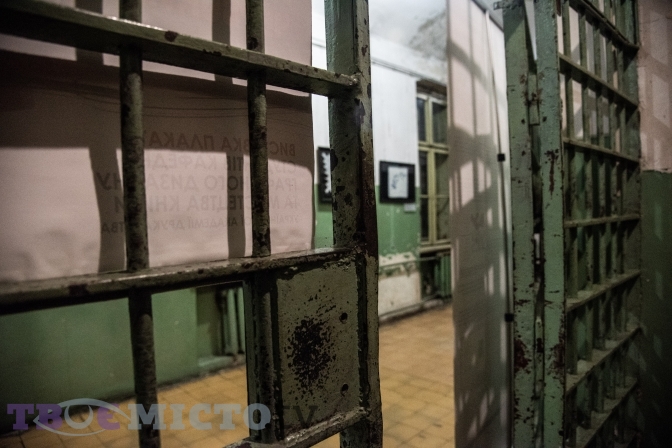
[For urgent updates please follow Ukrainian Freedom News on Telegram]
Atrocities of the Russians are not new to the world: Poles, Germans, Romanians, and Czechs know about them. Yes, the Russians also raped their wives, killed their husbands and children. But this history was postponed, it was covered by the victory in World War II and decades of Russian terror. Lviv remembers thousands tortured and killed by NKVD. Their stories can be heard in Lontsky Prison, they show how Russians hate Ukrainians and why Ukrainians are indomitable.
We meet Olesya Isayuk at the entrance to Lontsky Prison. She is a historian and has worked here for over 10 years. The woman leads us to her office. It used to be a pantry, but now the desktops, computers, and chairs are there. It’s warm, with the smell of coffee, but… uncomfortable.
This place turns consciousness upside down. When I was here for the first time, I was horrified by the realization of the atrocities that man is capable of. Thousands of people were tortured here. In the first days of the Soviet-German war alone, the NKVD workers shot more than 1,500 prisoners here. The «most dangerous» criminals were political activists, «counter-revolutionaries» and nationalists. When the Soviet forces withdrew, the people of Lviv saw mountains of corpses in the prison yards. People came here to get to know relatives and acquaintances.
Read also: Fortress-сity, or what is Lviv for Putin
I came here when history repeats itself in Bucha, Irpin, Mariupol, and found answers to many «whys».
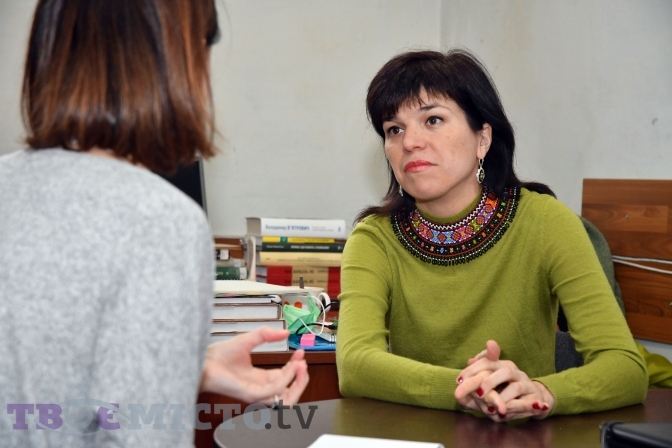
When we learned what the Russian military had done in Bucha, Irpin, we were stunned. To explain this in some way, many people began to say that the behaviour of our enemy is not new, that Ukrainians have seen his wild face more than once. In particular, in the «Prison on Lontsky». What happened in it, what stories can it show, what lessons can be learned from it today?
The real horror reigned here from June 22-30, 1941. On the morning of Sunday, June 22, Germany invaded the Soviet Union. In the wake of the first panic, Red Army units, and the NKVD with them, withdrew from the city. They left everything: prisoners in prison, documents. But they soon realized that not everything is so scary, and returned. On the night of June 24-25, mass shootings began, which lasted until the morning of June 29. During the day, Soviet troops left Lviv.
People heard shots, understood that something was happening, and that these shootings were carried out in the basement, in the prison. According to some testimonies, Lviv students first made their way here before the Germans came. And when the German soldiers came, they were horrified. In order to identify the bodies of the dead, the townspeople were allowed to come to the yard. Identified bodies were given to relatives for burial, and if someone found an acquaintance, they passed the information to relatives.
Read also: Timothy Snyder’s 10 reasons why Ukrainian victory is vital for the world
1,600 people were killed in five days in this prison. But she was not the only one. In total, the number of victims in such prisons in our region was 22 or 24 thousand people. This was the first two weeks of the German-Soviet war.
This happened in the west of Ukraine, in the west of Belarus and in the Baltic countries, the whole area was occupied by the Soviet Union from 1939 to 1940.
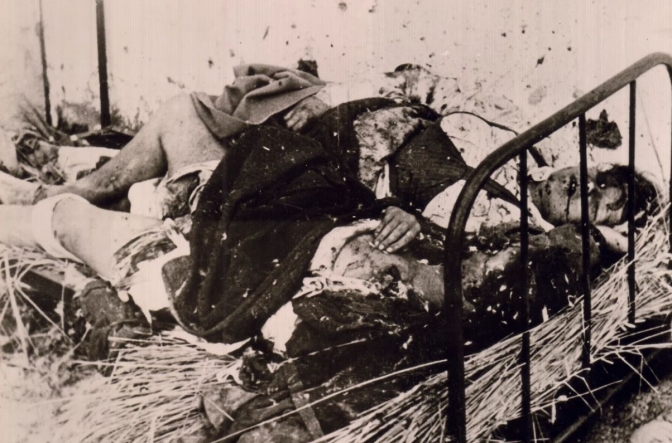
Photo from the CDVR archive, «Local History»
What was for the Germans the things they saw, and how they used this in their propaganda?
The military interpreted this as the mass extermination of civilians, for them it was a shock. However, this soon stopped shocking them, because Hitler was a participant in the so-called war of extermination. You see, the two totalitarian regimes fought, in fact, against the civilian population. It was the civilian population that became hostage to military operations.
But from the point of view of Nazi propaganda, what happened in the prisons of Western Ukraine was a gift. The Germans immediately began to accuse the so-called «Jewish-Communist» regime of this, saying that all this was done by Jews, which led to provocations and pogroms in the city. So they directed the general frustration in the direction they needed. The human psyche is so structured that it needs logic: people want to know why.
By the way, this is the basis of the practice of «breaking» people in concentration camps. The worst thing is not violence, the worst thing is the total lack of logic to rely on. There, this logic is constantly violated, and you do not know why. You understand that your destiny and the destiny of your cellmates depend only on what the «big toe on the supervisor’s right foot» wants.
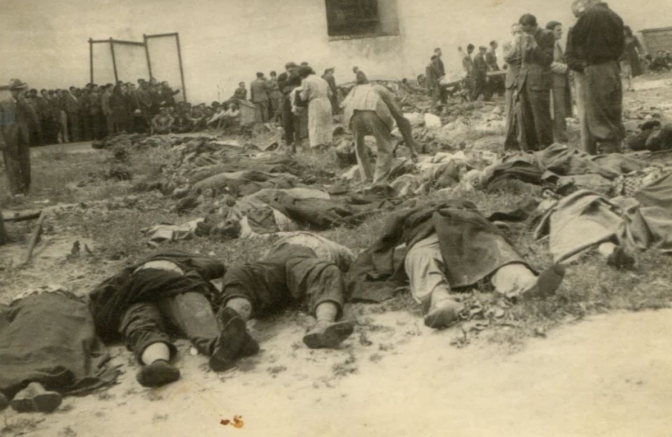
The photo shows the inner courtyard of the Lontsky prison. Photo from the publication of prisoners’ memories in the publication «Local History»
Who was killed here?
We need to understand the logic of Soviet terror. First of all, those who were the elite of society were tried to be arrested, destroyed, and deported. Then, those who had the resources, namely the wealthy people, because a wealthy person can use their resources to promote an alternative view. And this was a threat to the Soviet system because the totalitarian state did not tolerate competition. Moscow destroyed alternative elites, including national ones.
In addition, there was «indiscriminate» terror, that is, even those who did not look like that were caught. This is the logic of the concentration camp – so that people do not know what they will be punished for. You see, the main method of political struggle was terror.
But there were people who survived, got out of Lontsky prison. Who are they, what do they say in their memoirs?
In particular, Abbess Olena Viter, who hid Jews during the war, managed to escape. There are also memoirs of Bohdan Kazanivskyi. He was one of the first to see the horror left by the NKVD. He saw a mountain of bodies.
When the Russians retreated, there was silence, and then, they returned and began to take people from the cells. Prisoners heard gunshots, saw that people did not return, and tried to escape. They were called by the last name, so they either said that there was no one with this name here, or that it had already been taken away. The members Organisation of Ukrainian Nationalists who attacked the prison on June 26, helped the prisoners. They failed to release all of them, but a group of Polish officers and nuns escaped, including Olena Viter.
The memories of those who went to identify the bodies of the killed… you know, they are little different from the memories of the people of Bucha. I would not like to retell them. However, it is not necessary to exaggerate, to guess, because some macabre urban legends emerge from that horror. They devalue real victims and provoke meaningless discussions.
Lontsky Prison also has such a «plot». It is about a crucified priest with a distended abdomen and the abuse of pregnant women. There was only one witness who spoke about it. He said that he and a friend went to look at that priest, took a picture of him, but those photos were not taken anywhere, so he buried them with his father in the garden. The city remained under the «Soviets» and he was in exile. So it turned out that there is no confirmation of this story.
But if this were true, German propagandists would use it, it would be reflected either in German reports or in propaganda.
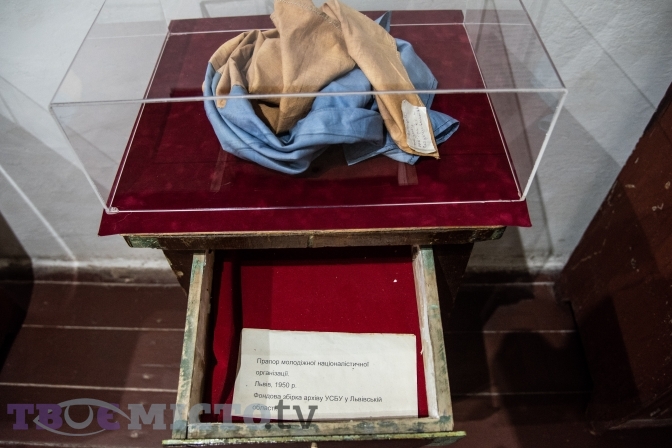
However, the fact that there was no crucified priest with a cut stomach does not mean that there were no other martyrs: women, men, fathers...
That’s exactly what I mean. But because of such stories, the question of this crime is translated into a debate, such as «maybe it was, or maybe it was not.» That discredits the truth, you know?
Read also: Innovative museum tells stories of Soviet-ordered deportation from western Ukraine to Siberia
For example, the story from Irpin about raped children. It turned out that it was a fake, that it was a photo from the Mykolayiv morgue, that it showed a real rape victim. But such «intrusions» can be used in favour of the enemy to provoke discussions about the veracity of the real crimes of the Russians. Of course, the story is awful, but we must honour the memory of the dead, document everything and not injure society once again. Everything must be carefully checked.
What were the guards like in this prison, are there any memories of them?
All we can know from the archives is that there was someone and he worked there for this definite period of time. Prisoners did not remember the guards much, of course, unless they were marked by something very special – negative or positive. The guards were the least individualized figures in the prisoners’ memoirs. They gave a porrige in the pot three times a day and followed them to the toilet twice – that’s all. There was nothing to talk to them about, they mostly did not understand our language. Through kinder guards, the prisoners communicated with each other, could pass a note, greetings.
However, investigators are different. There are a few more mentions of them: he behaved this way and that way, was like this or like that, mocked, beat, and so on.
By the way, we see here a huge difference between the image of a civil servant, to which they have become accustomed since the days of Austria and Poland, and the reality of that time.
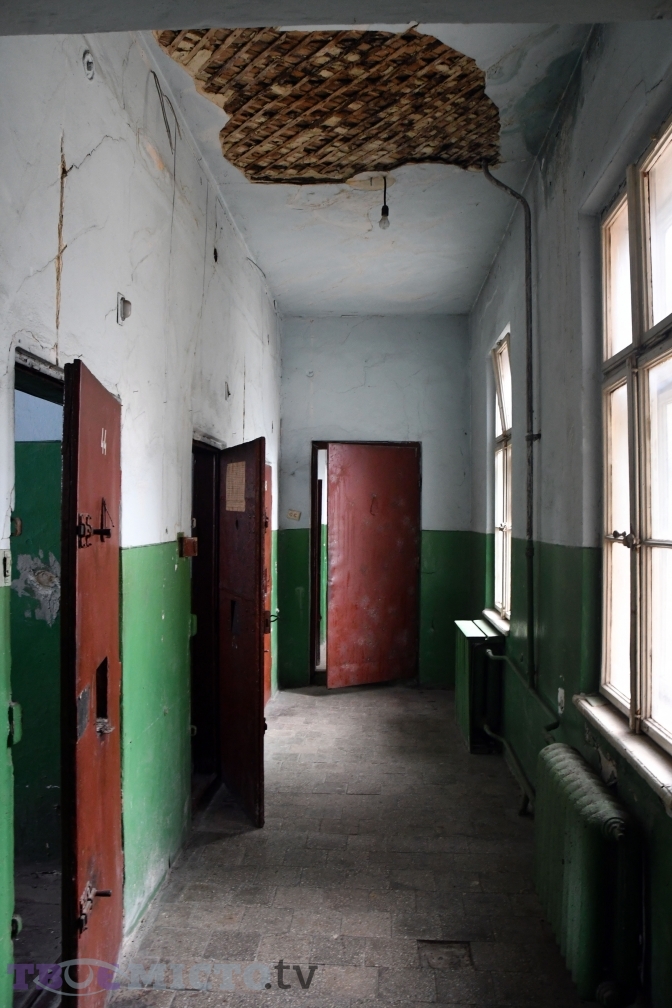
What do you mean?
For example, a local community member, engineer Kalynovych, was arrested in Stryi. The community, which is familiar to us even now, gathered and submitted a request. I wanted to know what was happening, why, on what grounds this man was arrested. In response, these people were summoned to the NKVD department and began to teach how they dared to write such appeals when there was the «Soviet» government!
And people said they didn’t know it wasn’t allowed… You know, you see that difference? These are two different worlds. This was not the case after the Second World War, because then, there was a moral readiness to meet the Soviet government as an enemy. This story is not about a call for justice, but about culture, a way of communicating with the authorities.
We are the heirs of the Polish Commonwealth, and this is important. Because in France, for example, was a rigid centralized state, while the Polish-Lithuanian Commonwealth consisted of Poland, Belarus, the Baltics, Ukraine. People had the principle of «nothing without us». There has never been a rigid monarchy here. Yes, we had democracy. Conventionally speaking, a Frenchman or a Spaniard was more limited in his attitude to the central government than a Ukrainian or a Pole.
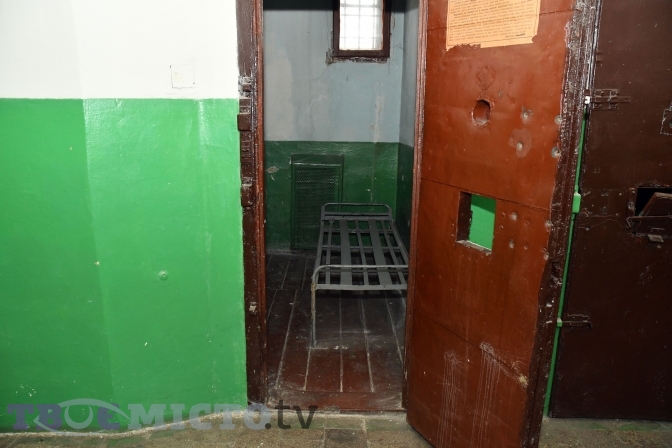
You see what is happening in the Kyiv region, in Mariupol, Kharkiv. Were these atrocities predictable for you as a historian? Some historians say this was to be expected, because «it’s a horde, we warned»… Do you think so too?
Those who have the right to say «we warned» are witnesses – those who have survived and left as evidence their experience of communication with the Russians, witnesses of totalitarian regimes, witnesses of the phenomena of this «Russian culture». Another thing we may not have heard is that it may not have been read correctly. Yes, the Russian army, at least in Ukraine, has demonstrated this before – Baturyn, the destruction of the Sich…
But it was so long ago. Society perceives this story as a bestseller…
Exactly. When you read a story, someone’s testimony, you can close it or reassure yourself that it has already happened, put it off and go out into a peaceful world. But now this will not happen, you will not go anywhere, because it is happening here and now, in our country. Stories from the past provide an opportunity to reflect on something. For the historian, what is happening today is not something that has never happened before.
In addition to the experience of Ukraine in 1941 and the experience of Western Ukraine in 1944 – 1946, there was an acute phase of the struggle against the Ukrainian Insurgent Army. In addition to the experience of the centre of Ukraine on collectivization in 1929 – 1933, and even before the «Sovietization», the Soviet occupation in 1918 and so on.
But you know, there are also testimonies of women from Berlin, Budapest, Polish cities, Romanians. The wave of rape was not limited to Germany (by the way, the fierceness of the Wehrmacht forces). Wehrmacht soldiers did not retreat from East Prussia, held on with all their might, not only because it was their land, but because they saw what Russia was doing. They did not need propaganda, they held a shield, allowed their civilians to escape.
Read also: «We came back to 1944.» Vitaly Portnikov about the lessons of World War II
Moreover, Countess Marion Dönhof, a German publicist who created a foundation that supports young intellectuals, could have gone missing there. Or Martha Gillers, the author of «Women in Berlin». In 1920, during the Soviet-Polish war, do you think the offensive of the Soviet army was without horrors? And Katyn, the suppression of Polish uprisings, evictions, deportations, the massacre of citizens in Prague, the suppression of uprisings under Catherine II?..

Are you saying that Poles, Germans, Czechs, Romanians should also know what Russia is, what its army is?
They know this, they have their experience, so we are not alone. And that’s why this experience was not told… Maybe, it’s too scary. You can understand those who will never tell about it. Maybe it’s a matter of technical capabilities. At that time, many simply could not write, stories were passed from father to son. And then, after World War II, Russia became the winner, you know? She kept under control those who could tell. And over time, everything got lost.
Do you think that these horrors have not been fully spoken of before, and do we show the world enough of what is happening now? Will this have a response, can this trouble change the course of the current war?
It has already affected. Hitler became a monster for Western Europe, and for the East – «a petty tyrant of the Stalin era.» Yes, we had something to compare with, in our experience, Stalin was more of a devil than Hitler. The only exception is the Jews, because for them Nazism meant total destruction, while for everyone else communism was a greater threat. Europe says it hasn’t seen more horror than Hitler, but did the SS shoot civilians in the street?
Now, Western Europe has seen something even scarier, seen live. There are journalists, and international ones as well. The whole world got there at once – through the Internet, social networks.
I even deliberately spent Sunday writing to everyone I worked with in the West about what happened here. I understand that the media is a force, but it is also a distance, and private messages are interpersonal connections.
Britain’s position is special. We know about it as very restrained, in politics as well. And now, it is suspiciously sharp. In Europe, too, it is not customary to speak sharply from the highest tribunes, words are chosen there, the subtext is important, but now everything is different. I think Bucha will respond to Moscow. Do we want Moscow to be razed to the ground at once?
What is this war for? No one believes that it is about territories or any resources. We see who is being killed and how…
This is an ethnic war. In our region, this concept is used in the context of the Ukrainian-Polish conflict. Now, the ethnic war is going on, I realized this when I heard the test for «palyanitsa». This is a great password, a symbol. To pronounce this word, you need to know the language. Yes, it’s about identity.
Read also: «The compromise was exhausted.» Expert of Ukrainian Institute for the Future about May 9 celebration
And then, when there are reports of murdered men, women, children… A person can’t just kill another person if he is not a psychopath. And psychopaths do not walk in hundreds. That is why it is a matter of terrible hatred. For Russians, the trigger for murder is a sign of national identity: language, embroidered shirt, flag, trident. They first kill the men capable of resistance, who are the bearers of identity, and then rape women. Not due to their perverted nature, but because it’s a way of putting pressure on ethnic confrontation. We are fighting to punish genocide, and they are fighting to commit it.
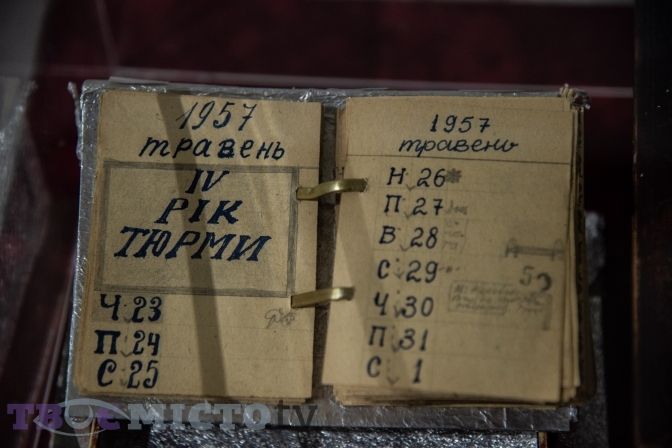
Have you seen retribution of the Russians for such actions, or has there been such a thing in history?
They pay with their insignificant existence. But regarding serious [retribution], then probably not. You know, when you think about how they live, in what environment, between what values, they might be compassionated. But do not succumb to it – they are to blame. They have the right to choose, not everyone will be jailed. There was a riot, and they could have changed something during the turmoil, in the late Romanov era, they could have shot the Bolsheviks in time in the 1990s, they might not have elected Putin, but they didn’t. In my opinion, retribution must be. Now, every political leader, regardless of party, will see that the people will demand that he do with Moscow what the Romans did with Carthage, – «to plow».
Victoria Savitska spoke, translated by Vitalii Holich
Photo: Ivan Stanislavsky and Local History
Full or partial publication of the text without the consent of the editors is prohibited and will be considered copyright infringement.
Follow us on Facebook and Instagram. Lviv Now is an English-language website for Lviv, Ukraine’s «tech-friendly cultural hub.» It is produced by Tvoe Misto («Your City») media-hub, which also hosts regular problem-solving public forums to benefit the city and its people.












